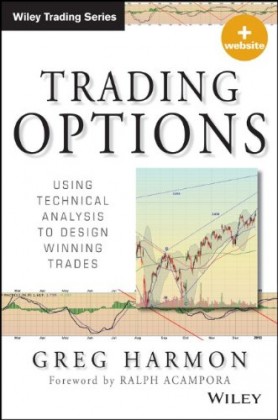The fo llowing is a brief excerpt from the recently published book on the use of technical analysis in options trading Trading Options: Using Technical Analysis to Design Winning Trades by veteran trading blogger Greg Harmon (@harmongreg).* Greg is a veteran of the markets and generously shares his insights online and on his blog Dragonfly Capital. There are a number of ways to trade the markets but too many traders get themselves in trouble when they try to fight the general market trend.
llowing is a brief excerpt from the recently published book on the use of technical analysis in options trading Trading Options: Using Technical Analysis to Design Winning Trades by veteran trading blogger Greg Harmon (@harmongreg).* Greg is a veteran of the markets and generously shares his insights online and on his blog Dragonfly Capital. There are a number of ways to trade the markets but too many traders get themselves in trouble when they try to fight the general market trend.
Excerpted with permission of the publisher John Wiley & Sons, Inc. (www.wiley.com) from Trading Options: using Technical Analysis to Design Winning Trades by Greg Harmon. Copyright (c) 2014 by Greg Harmon.
The best set ups for a trade have several different pieces of Technical Analysis working to support a move. This is called building a mosaic. You can think of it as writing a song. Adding the bass to the piano makes it a little better. When the drums and horn are also working together it is nearly complete. Add some stellar vocals and it turns into a winner. There are many different styles of technical analysis and we touched on four of them here. It may not seem practical to look at every stock in your universe from each perspective but as you get more practice aspects of different styles will jump out on different charts at different points in time. Remember that we started with the trend and an understanding that something close to 70 percent of stocks move with the trend. Think about what that means. If there are aspects of technical analysis that are more prevalent at a point in time in the indexes then they stand to be more prevalent in the individual stocks that have been handpicked because they are following the trend. If the indexes are pulling back to the 100 day Simple Moving Average or are showing a Shark Harmonic, then you should not be surprised to see many stocks at the 100 day SMA or in a Shark as well. Rough practice you will start to get a feel for whether a pullback is near a Fibonacci level and the near ‘W’ shape is an easy giveaway to look for a Harmonic.
Believe it or not many technicians do not need to put lines on a chart to see patterns, trends and support and resistance. As you peruse the charts with your return criteria in mind you will recognize that the Fibonacci’s may not apply to one situation. That is ok. A set up that works with just one type of Technical Analysis is a good way to start. If you start with a Classical Approach and find a pattern ready to break, then look at the candlesticks to see if they confirm or disagree with your analysis. What about any Fibonacci or Harmonic pattern then. And if there is one does it agree or not? What are the momentum indicators saying about the chart? The more different styles that align in your analysis the more confident you can be in the set up. It does not mean that it will ever trigger but wouldn’t you want a stock that looks to be breaking an Inverse Head and Shoulders neckline higher in a Harmonic Pattern with a Potential Reversal Zone 10 percent higher that has a rising RSI and a 3 Advancing White Soldiers candlestick pattern, than a stock that has just one of these things going for it?
*Greg a blog colleague but I have not received any compensation for this post. However if you purchase a copy of the book through Amazon I will get a small cut of the action.








